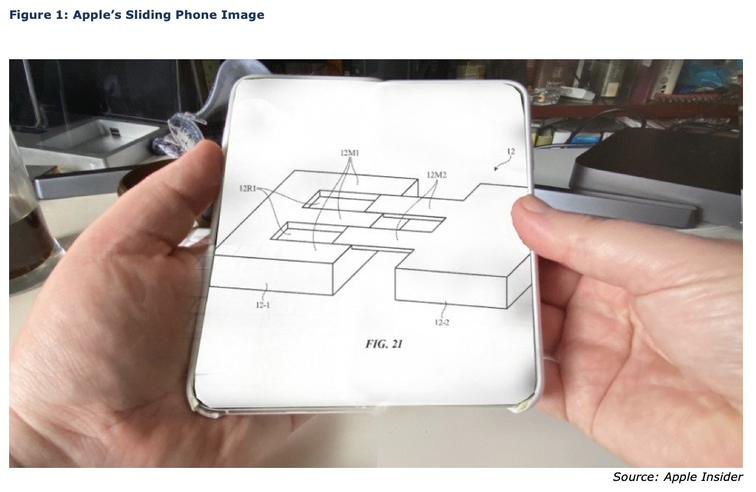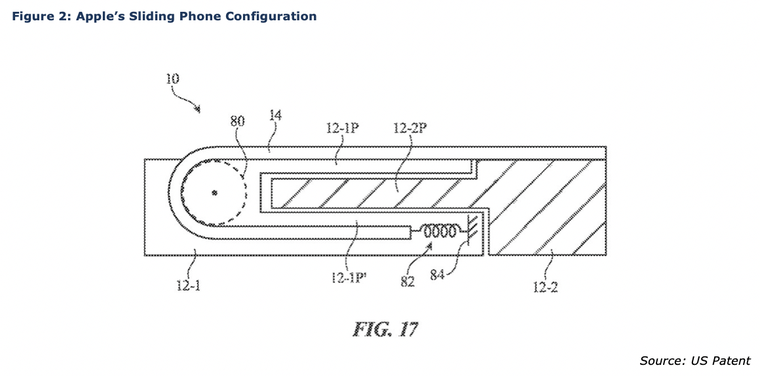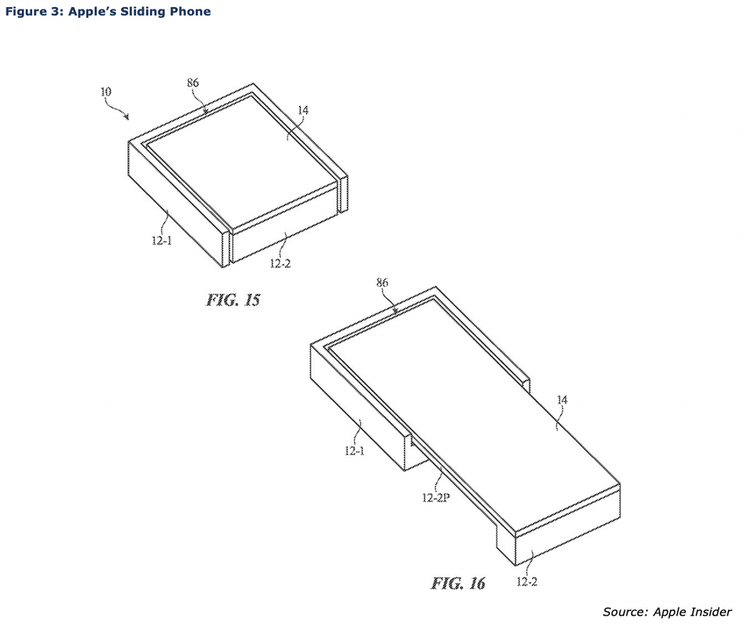Vertical Divider
Expanding iPhone With a Sliding Body Design and a Flexible Screen
Apple's researchers are working on how to make sliding sections within the smartphone's body support a flexible display. The allure of a super-sized foldable iPhone that packs small has led to many rumors about foldable models. Reports of an 8-inch flexible OLED iPhone arriving in 2023, are prevalent and in 2020 pointed to a pair of iPhone designs using foldable components being prototyped and tested by Foxconn.
Apple's researchers are working on how to make sliding sections within the smartphone's body support a flexible display. The allure of a super-sized foldable iPhone that packs small has led to many rumors about foldable models. Reports of an 8-inch flexible OLED iPhone arriving in 2023, are prevalent and in 2020 pointed to a pair of iPhone designs using foldable components being prototyped and tested by Foxconn.
In a patent granted by the US Patent and Trademark Office last week titled "Electronic devices having sliding expandable displays," Apple proposes a display design where a flexible display is effectively rolled up inside an enclosure, like a scroll. The housing includes elements that can slide, lengthening the body of the enclosure at the same time as dragging the display out of its scroll state. The display can be tensioned, such as by using a coil spring, to make sure it is flat and that it rolls back up when the enclosure is slid back to its more compact state. The system would allow a smartphone style device to either get longer or wider, increasing the usable screen size to match, depending on how it is set up. When in its compact state, part of the display will still be usable.
The patent discusses different ways to handle sliding motions, including the use of elongated members to keep the two main sections connected together. Elongated members will also be used to provide support to the flexible display as the overall size of the device grows. These members could be included on one or both sections of the enclosure, giving more flexibility to designers. The way the display is held inside the body is also mentioned in claims, with suggestions the flexible screen can have a single bend that allows it to double back on itself once inside the body, largely remaining flat. A second variation has two bends, with the screen doubling back on itself twice when curled up inside the body. The screen itself is made out of a flexible substrate, with mention of it comprising of a flexible OLED display.
A small-screen device could slide the body down, unfurling a larger display.
The patent lists its inventor’s ass Michael B. Wittenberg, Owen D. Hale, and Tatsuya Sano. It was originally filed on January 16, 2020, and became known to AppleInsider as an application on October 15, 2020.
The patent lists its inventor’s ass Michael B. Wittenberg, Owen D. Hale, and Tatsuya Sano. It was originally filed on January 16, 2020, and became known to AppleInsider as an application on October 15, 2020.
|
Contact Us
|
Barry Young
|



